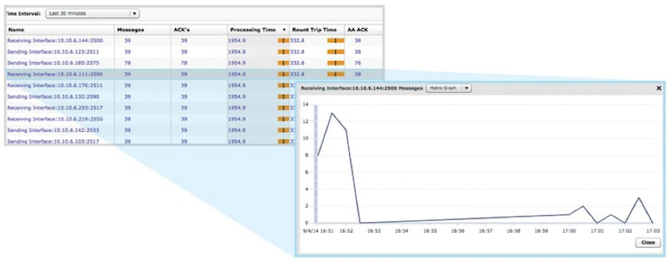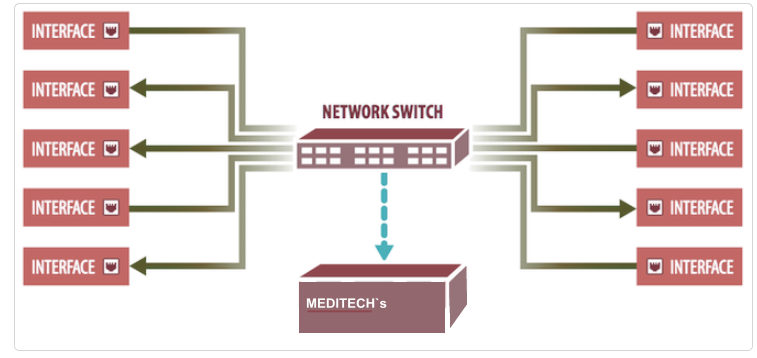HL7, the global standard for healthcare information
The HL7 Gateway server uses the HL7 (Health Level 7) communication protocol. HL7 is a global standard for communication of healthcare information between different types of devices and systems.
With the HL7 Gateway server, you can enter the patient ID at the bedside monitor and receive the patient information from the HIS. The HL7 gateway server transfers the monitored data to HIS and EMR including transport time data acquired by Life Scope PT.
In addition to patient information and vital data, the HL7 Gateway server can handle alarm history, arrhythmia and ST recall, 12-lead analysis reports, and waveforms*. Meditech’s HL7 Gateway supports any kind of medical documentation systems and diagnostics by providing ECG waveforms in MFER format to Stroke Risk Analysis software (SRAclinic by apoplex medical technologies),
Today, nearly every healthcare organization relies on the HL7 messaging standard to exchange information between systems and applications. For this reason, each HL7 message is a critical link in healthcare workflows. If HL7 messages are not delivered or generate errors, then patient admission information, billing details, laboratory results, and other important data cannot be passed from one system to another.
Traditional methods of monitoring HL7 interfaces are limited in terms of functionality. HL7 operations teams must rely on inconsistent server logs and basic dashboards from interface engines to monitor the health and performance of HL7 communications. As a result of this piecemeal approach, these teams often do not know of an issue until they receive complaints from users.
Real-Time Visibility for All HL7 Interfaces
The Meditech platform analyzes wire data to automatically discover and classify all active sending and receiving interfaces. This non-invasive approach offers an elegant and quick way to gain holistic, vendor-agnostic visibility into all HL7 communications in an environment, unlike the limited visibility provided by discrete interface engines or interface logging.
HL7 Analytics for Business Intelligence and Clinical Informatics
Because of the flexibile nature of the HL7 standard, HL7 messages carry a tremendously rich trove of operational data. The Meditech platform can extract, analyze, and visualize any data field contained within an HL7 message in real time, from message IDs to valuable operational information such as admission time and symptoms. Through Meditech`s Open Data Stream, these events and metrics can be streamed in real time to a non-proprietary datastore for correlation with other data sets and multidimensional analysis.
Healthcare IT and business leaders can now proactively discover and map HL7 communications across interfaces, analyze the performance and effectiveness of clinical workflows, and derive a wide range of valuable operational and business insights.
Troubleshoot HL7 Interface Problems Faster
With the Meditech platform, interface teams can start with the summary dashboard that provides an auto-discovered list of all the active sending and receiving interfaces with corresponding activity metrics. From there, you can drill down to the performance of each individual interface to get relevant insight to help with troubleshooting:
- Counts for each message type and acknowledgement, including accepts, rejects, and errors
- Errors sorted by application and message type, including message IDs and error details contained within the HL7 message
- Round-trip time and processing time for HL7 messages
- Tracking for duplicate messages
Dynamic Mapping of HL7 Interfaces
Operations teams and HL7 analysts can use the Meditech platform to easily keep track of and report on HL7 activity. Meditech automatically maps activity between all sending and receiving HL7 interfaces, as well as the applications dependent on those interface connections, all in real time.
 summary and drill-down views for all active sending and receiving interfaces
summary and drill-down views for all active sending and receiving interfaces





